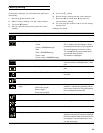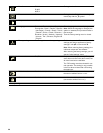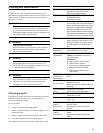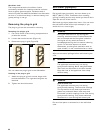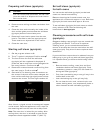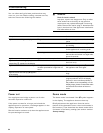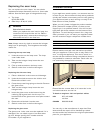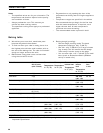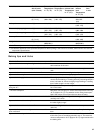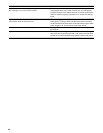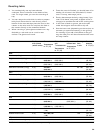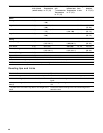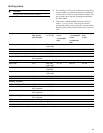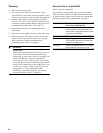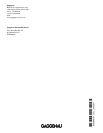
42
Thawing
▯ Set the defrosting mode.
▯ Put the grill rack with the frozen food on the
second level (with 5 levels on the third level), then
insert the grill pan to catch the defrosting liquids.
▯ Defrost large pieces of meat (roasts, chickens,
etc.) at 115 - 120° F (45 - 50°C) so that the outer
part does not get cooked. Small or flat pieces can
be defrosted at 120 - 130° F (50 - 55°C.)
▯ Remove the food from the packaging before
defrosting.
▯ Only defrost the quantity that you need right away.
▯ Please consider: defrosted food will not last as
long as frozen food and will spoil more quickly
than fresh food. Prepare defrosted food
immediately and cook it thoroughly.
9 WARNING
Health risk
When defrosting food from animal sources, you
must remove the liquid that escapes during
defrosting. It must never come into contact with
other food. Bacteria could be transferred.
Insert the grill pan under the food. Throw away
the liquid that collects from defrosting meat and
poultry, then clean the sink thoroughly and rinse
it with a lot of water. Clean the grill pan in hot
soapy water or in the dishwasher. After
defrosting, operate the oven for 15 minutes
using convection at 355° F (180°C).
Acrylamide in foodstuffs
Which foods are affected?
Acrylamide is mainly produced in grain and potato
products that are heated to high temperatures, such
as potato crisps, chips, toast, bread rolls, bread, fine
baked goods (biscuits, gingerbread, cookies).
Tips for keeping acrylamide to a mini-
mum when preparing food
General Keep cooking times to a minimum. Cook
meals until they are golden brown, but
not too dark. Large, thick pieces of food
contain less acrylamide.
Baking With convection max. 355° F (180°C).
Cookies Egg or egg yolk reduces the production
of acrylamide. Spread out a single layer
evenly on the baking tray.
Oven fries Cook at least 400 g at once on a baking
tray so that the fries do not dry out.



